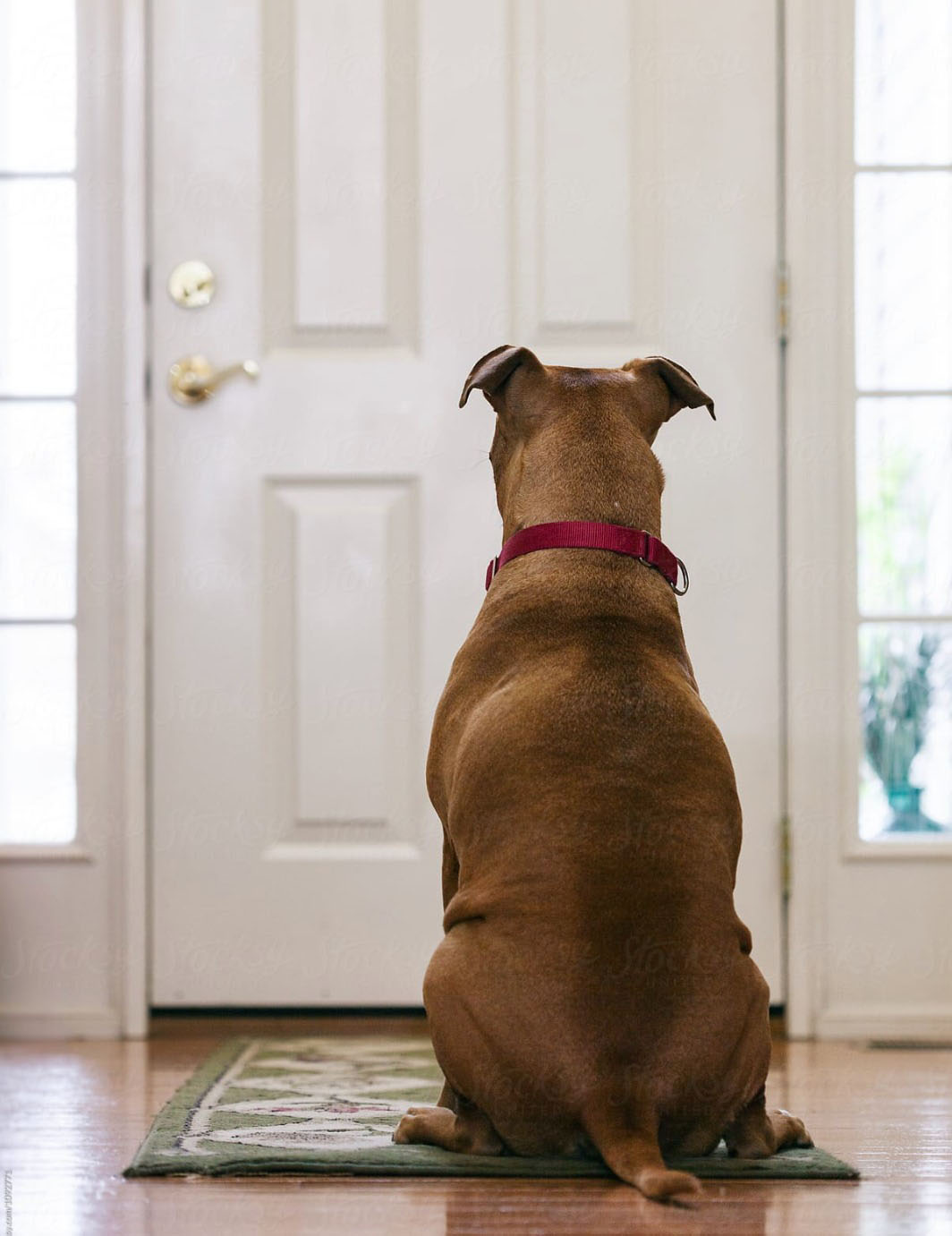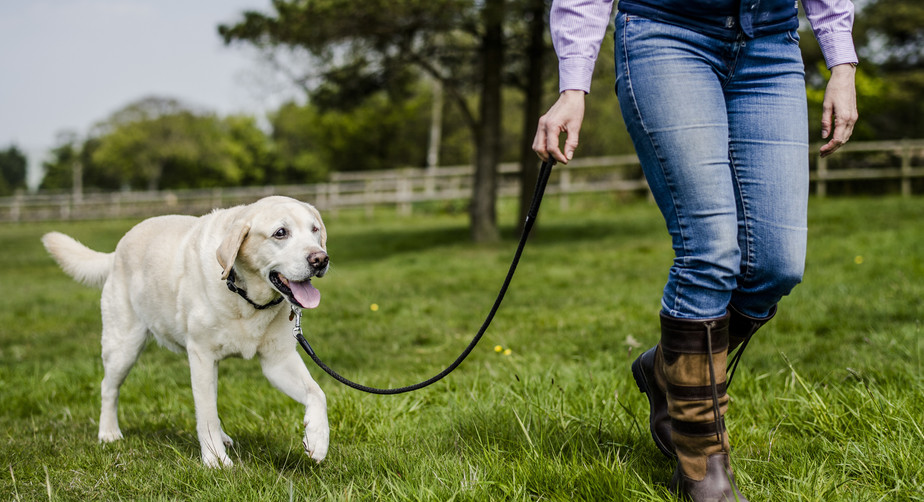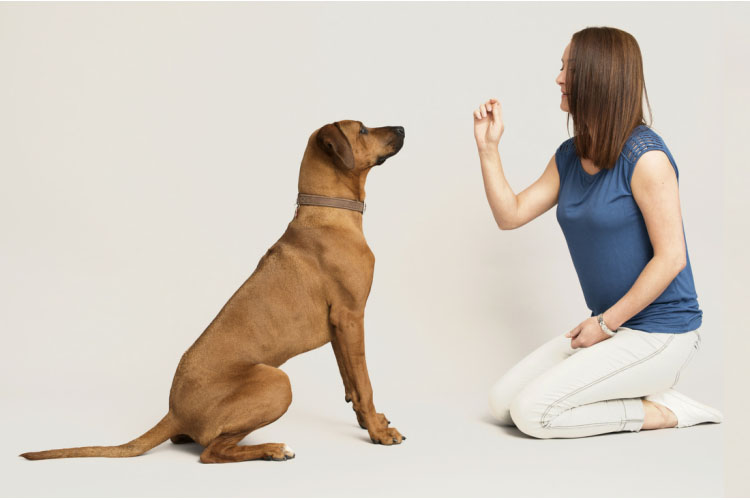Best Practices – Dog Behavior Around an Open Door
There are many reasons to teach your dog how to behave around an open door. Especially in the urban environment, a dog can get into endless trouble by darting across a threshold before you’ve had a chance to scope out what’s on the other side. Every dog who lives in an elevator building, for instance, should learn how to wait before entering or exiting the elevator car, so as to avoid unpleasant interactions with other dogs or people or the doors closing on the leash with the handler still outside.
Fortunately, it’s easy to teach a dog what to do instead of dashing through an open door. Below we’ve outlined simple steps you can take to train your dog how to wait when you open the door to your home or car when an elevator arrives, or at any other threshold, including curbs or the invisible boundary of your open floor-plan kitchen. This training may take multiple short sessions and will need to be done in every location where you want it to work.
What you’ll need:
- An interior door or door to a safe, enclosed area to start
- Six-foot leash
- Approximately 20 small commercial dog treats or pieces of delicious, dog-safe food per session
Steps for this lesson:
Create New Expectations
- Start your lessons with a door that doesn’t lead anywhere dangerous or incredibly tempting.
- Put your dog on a leash if you need to work at an exit that goes to an unsecured or particularly fun area, but keep the leash slack—think seat belt, not reins.
- As you open the door just a crack or even simply touch the door handle, click a training clicker or say a short word like “yes,” and then immediately toss a treat on the floor about 4 feet behind the dog. Start with whatever small piece of a door opening your dog can currently see and not immediately run through the door. If you are using a leash, be sure not to toss the treat so far that the dog can’t reach it on a slack leash. Close the door and wait for the dog to eat and reorient toward the door. Repeat.
- If you’re working at an elevator, push the call button, walk back 10 feet (so the dog cannot reach the elevator on leash), and simply start feeding the dog just as the elevator door opens. Don’t walk toward or get on the elevator; just continue to feed until the door closes, then stop when it does. Repeat.
- If at any point the dog walks through the door, don’t click or say yes, don’t treat, and don’t head out for a walk. Simply invite the dog back inside to try again. If the dog fails once more, back up your criteria a little, use better treats, or both.
If your dog likes the treats you’re using, he’ll quickly start to make some associations:
- The door touching/opening predicts treats
- Those treats will appear behind me.
Observe Your Dog’s Behavior
The treat delivery will start to change how your dog behaves when you touch or open the door, or when the elevator opens. In most cases, he’ll start to plant his front feet, shift his weight backward, and/or look at you as the door opens.
Next Steps:
- Observe what he does that you like—whatever’s incompatible with running through the open door—and begin to mark that with your “yes” or your click before delivering the treat. The more specific you can be about what you mark, the faster the training will likely go.
- When your dog has offered this new behavior 4-5 times in a row, you can open the door a little wider. Repeat.
- When, as you open the door wide enough for the dog to move through, he chooses to plant his front feet or look at you instead, you can add a verbal cue, such as “wait.” To add the cue, say “wait” between when you open the door and when you are very sure the dog is going to do the behavior you’ve been reinforcing. The word will come to signal that if the dog does that behavior, good things will follow.
- You can start to deliver the treats by your side, rather than behind the dog.
- Teach a release cue: Pretty quickly after teaching the wait, you can also teach the dog that there’s a word that means it’s now time to go through the doorway. Say the word, such as “OK,” then prompt the behavior of moving forward through the door.
- If the dog likes what’s on the other side of the door, eventually the release cue can take the place of the treat. But at first, it can be helpful to also click or say yes and give a treat when the dog crosses the threshold. This tends to teach the dog to orient to you right after you go through doors, which is another very useful skill.
You don’t really need a verbal “wait” cue if you only want this behavior when you open a door—the door opening will become the cue to wait. But adding a verbal cue lets you quickly reteach this behavior at other doors, thresholds without actual doors, car doors, curbs, and other locations. You can even use it to stop your dog in his tracks with no doorway in sight—say, if he’s heading for a dropped item on the kitchen floor.
Be aware that each time you introduce this training into a new situation, you may have to start at an earlier step and work back up.
When to Consider Calling a Professional, Certified Trainer
If your dog doesn’t pay attention to treats when there’s a chance to go through a door, that doesn’t mean this method won’t work for you. Consider finding a pro in your area when you’ve tried this approach 2-3 times or have invested in at least 1-2 hours in this technique.

 FetchTheAnswer.com
FetchTheAnswer.com



